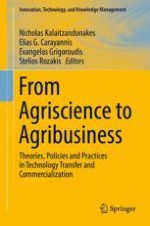This volume presents a state-of-the-art overview of the rapidly evolving field of agribusiness, highlighting the most current issues, concepts, trends and themes in research, practice and policy. With a particular emphasis on technology, product and process innovation, the authors cover a wide array of topics relating to such issues as research and development, technology transfer and patents and licensing, with particular respect to the roles of academic institutions, private organizations and public agencies in generating and disseminating knowledge.
Featuring case studies of innovative initiatives across the industry, this book will appeal to researchers, business leaders, university administrators and policymakers concerned with the multi-faceted implications of this dynamic and controversial sector.
